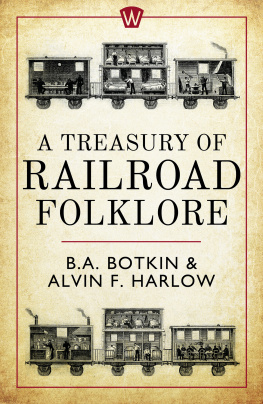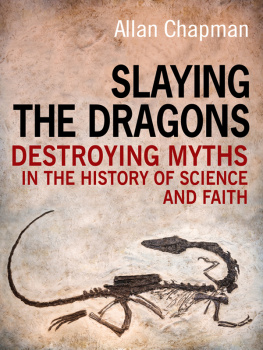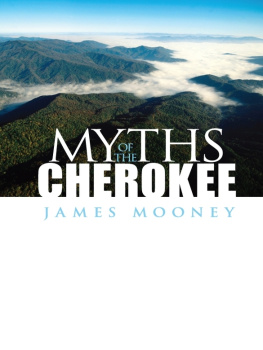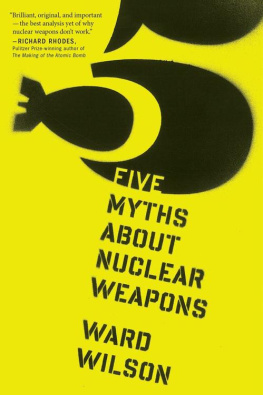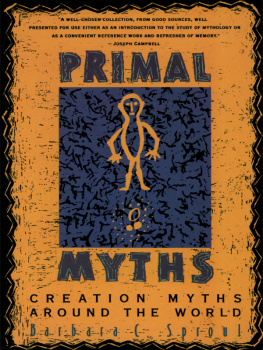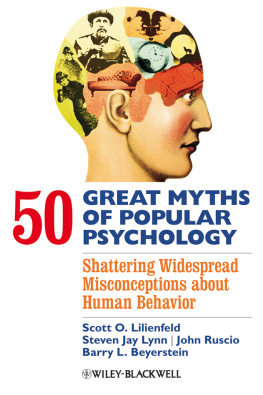MYTH 1 WE ARE THE ONLY SPECIES THAT HAS EVER HAD GLOBAL EFFECTS ON THE ENVIRONMENT
Reality must take precedence over public relations, for nature cannot be fooled.
PHYSICIST RICHARD FEYNMAN,
IN FINAL REPORT ON THE CHALLENGER DISASTER
Reality: We live on a very peculiar planet, because living things have greatly altered Earths surface for more than three billion years.
AS A RESULT OF LIFES LONG PRESENCE, EARTH IS UNLIKE ITS NEAREST NEIGHbors, Mars and Venus, and unlike any other planets so far discovered. Most important, it is only because of the life-induced major changes in our planets atmosphere, oceans, and land that we and all vertebrates can live here.
Nature is not static. Earths environment is a moving-picture show, a vivid video, not a still life, not a still photograph. Its grandeur is in its dynamics.
It is particularly odd that our Earth is so different from its nearest neighbors, Venus and Mars, because the three planets are similar in many ways. They are within a factor of two in their distances from the sun and within a factor of two in their diameters. Astronomers consider such ranges of differences to be minor in the universe. Since these three planets are so similar in these physical ways, one would expect them to be similar in many other ways, including the composition of their atmospheres. However, scientific observations in the twentieth centuryboth from space probes sent to Mars and Venus, and from Earth-based telescopesrevealed that the atmospheres of Mars and Venus are much like each others but very different from Earths. The Venusian and Martian atmospheres are mostly carbon dioxide, with a small amount of nitrogen. Oxygen is a rare and minor component. In contrast, Earths atmosphere is 79 percent nitrogen and 21 percent oxygen, while carbon dioxide makes up only 0.04 percent. The atmosphere of Venus is very dense, while that of Mars is very thin.

How has life fundamentally altered Earths global environment? Beginning with the oldest known forms of life, around about 3.5 billion years ago, organisms have been capable of new chemical reactions or rates of chemical reactions not possible before. They have inhabited new regions, fed in new ways, changing the kinds and rates of chemical reactions. All of these have been innovations that have fundamentally changed the environment globally. The first of these chemical reactions was the invention of photosynthesis and respiration by the most ancient ancestors of bacteria. Cells that can carry out photosynthesis, thereby producing their own food, release oxygen, which is a toxic waste inside the cells. Oxygen is a highly reactive element, and if retained within a bacterial cell, it would destroy the complex organic compounds that kept the cell alive.
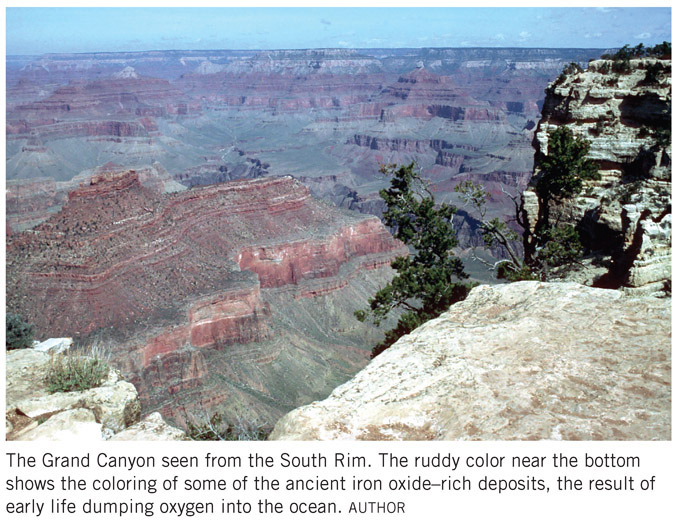
Getting rid of this internal toxin was simple: Dump it out into the environmentjust some garbage to throw away. Yes, the earliest life-forms used the environment as a chemical-waste dump.
At first, this free oxygen dumped into the ocean by bacteria combined with metals dissolved in the ocean water. It oxidized the iron, giving it the red color of rust. The oxidized iron was much less soluble in water than the previously unoxidized form. So, iron rust was deposited in the very early ocean sediments and was eventually converted into iron-containing rocks. We are familiar with these rocks as the reddish ones visible, for example, near the bottom of the Grand Canyon. Thus, early life created the vast iron ore deposits that have been so useful to us since the beginning of the Iron Age, and then the industrial-scientific age.
Once most of that dissolved iron was oxidized, the only place toxic oxygen could go in huge quantities was into the atmosphere, which became lifes next major garbage dump. Although oxygen was a poison to early life, once there was a lot of it in the environment, it offered huge new opportunities for life. Thats because oxygen is very reactive, and creatures that could burn an organic fuel in oxygen could have a lot more usable energy. This made possible the evolution of multicellular organismscomplex life-forms, the kind we are familiar with and are one of. Without early lifes huge effect on the biosphere, we and all the cute and helpful creatures we like so much wouldnt be here.
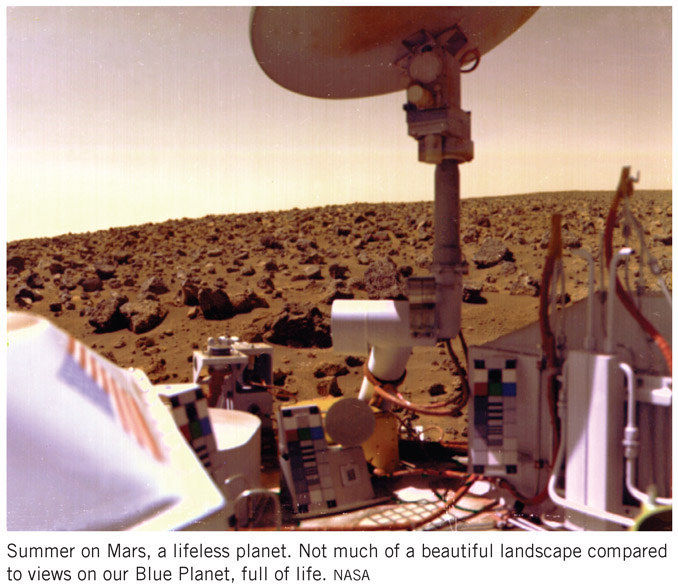
Life has altered geological chemical cycles in a surprising number of ways. As one geological scientist has put it, life is a tectonic force, changing what chemical compounds get made, buried, and even recycled as the tectonic plates push minerals deep into the crust and bring them back up again. Theres a good chance that where youre sitting and reading this book is largely a biological product. Obviously it is if you are in a wooden house, but a cement building uses limestone that is primarily a biological deposit. The steel beams come from iron ore deposits that were products of ancient bacteria. The car, bus, train, or subway you may be in is also built partly of that iron originally laid down by bacterial action. And most of the fuels speeding you along are fossil deposits, coal (from trees) or oil (from microorganisms). The air you breathe, as Ive explained, is a biological product. Nature isnt just something out there that you visit in a park or zoo; it is what we live within. We are not separate from nature; we are within it, and would not survive if we werent.
During lifes history on Earth, there have been a number of other inventions by species that evolved later than those ancient bacteria and greatly altered the global environment. One was when new kinds of life invented calcium shells, and later, when others (vertebrates) invented calcium-based skeletons. The shell-forming creatures produced huge limestone rock formations, such as the major bedrock of Florida, heavily mined to make cement and other building materials. Many Florida freight trains are still heavily loaded with limestone today.
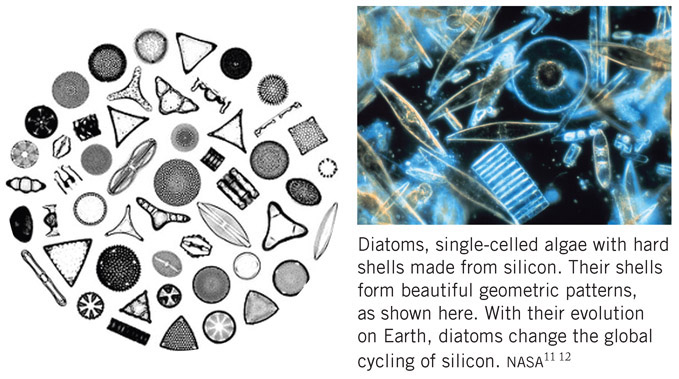
A similar thing happened with silicon, which wasnt used in any great amount until diatoms evolved. Diatoms are single-celled algae which have shells made of silicon oxide, now a major factor in the flux of carbon from the atmosphere to ocean sediments. Diatoms are abundant along the continental shelf and can grow very rapidly; in fact, a population of diatoms can double in four hours. As diatoms became abundant in the oceans, they changed the global cycle of silicon. Diatoms are particularly important in the burial of carbon because their silicon shells allow them to sink readily, unlike other forms of phytoplankton.
Diatomaceous earth is a mineral deposit of considerable use. It is a mild abrasive, used in toothpaste, facial scrubs, and metal polishes. Alfred Nobel discovered that nitroglycerin could be made much more stable if absorbed in diatomite, and this led to his invention of dynamite.
Wood-Producing Vegetation Changes Earths Surface
The earliest vegetation to live on the land did not have woody tissue, so it could not create strong structures or grow tall. Being taller than your neighbor is a great advantage for plants that need sunlight, for the obvious reason that this is the way they can win at the competition for that resource.


